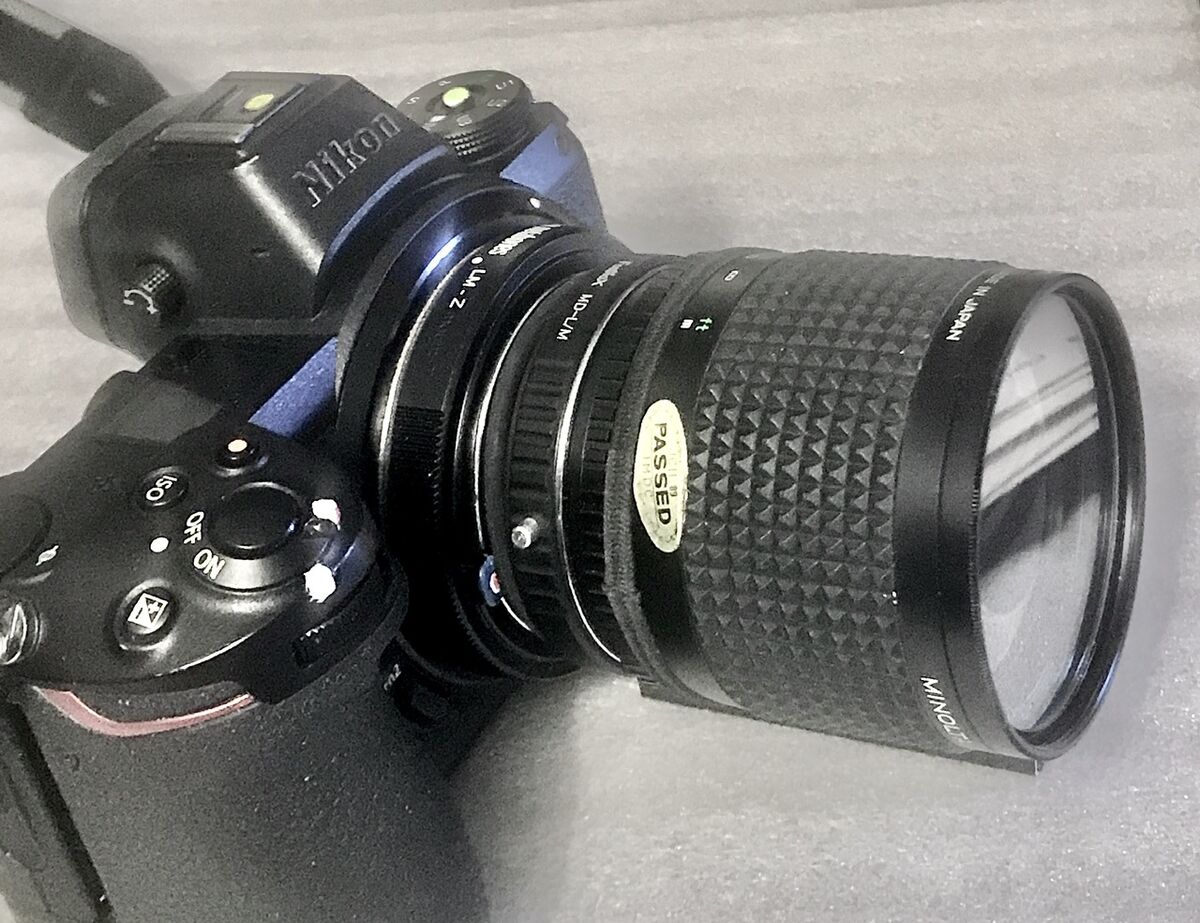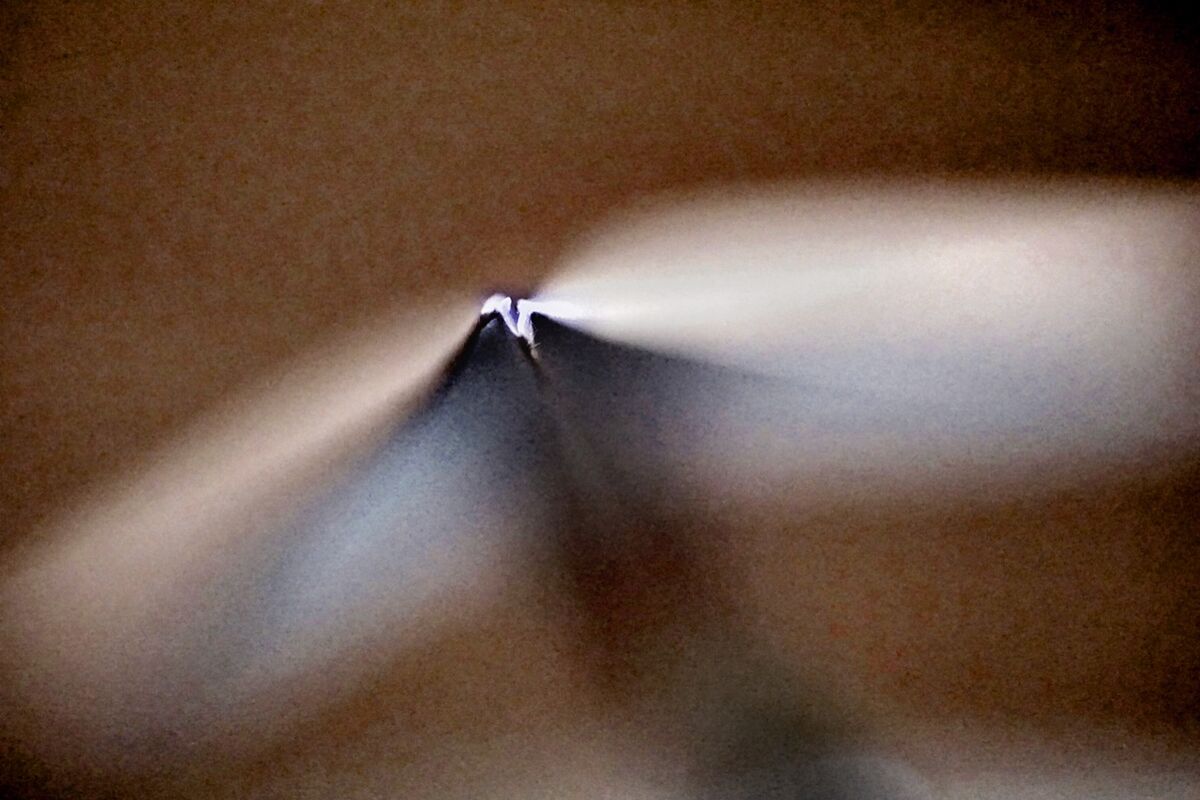All lenses sharp at f8
Dec 17, 2023 00:34:54 #
mwsilvers
Loc: Central New Jersey
bikinkawboy wrote:
Correction #2. F8 is the largest aperture, F32 is the smallest. I have one in the other room. I got it off eBay for a total of $38 years ago in like new condition. In high contrast scenes such as snow it has copious amounts of purple fringing but is actually a fun lens to play with considering it cost me $38. Probably wouldn’t be as much fun had I paid $100. Had I paid $200 I probably wouldn’t have a single good thing to say about it.
From my perspective either a lens is good or it is not good regardless of how much it costs. The least expensive lens I have ever owned is the tiny TTArtisan 35mm f/1.4 manual focus prime lens with a Nikon Z mount purchased new for only $66 USD on Amazon last year. It also turned out to be one of the sharpest lenses across the frame that I have ever owned. I also have owned very inexpensive lenses that were truly mediocre. While purchasing a cheap bad lens is a much less painful investment, IMHO, it has no added value just because it was cheap, and I would most likely discard it. Why waste time with a mediocre optic when better options are available?
Dec 17, 2023 01:33:53 #
bikinkawboy wrote:
Correction #2. F8 is the largest aperture, F32 is the smallest. I have one in the other room. I got it off eBay for a total of $38 years ago in like new condition. In high contrast scenes such as snow it has copious amounts of purple fringing but is actually a fun lens to play with considering it cost me $38. Probably wouldn’t be as much fun had I paid $100. Had I paid $200 I probably wouldn’t have a single good thing to say about it.
Okaaaay ! You mean one of those awkwardly physically long refractors. I think I still have one somewhere. Your mention of purple CA fringing clued me in. Somehow I thought we were discussing the cheap 500/8.0 reflector lenses cuz some post had mentioned about a "fixed f/8.0"... and reflector lenses acoarst have only their one fixed aperture.
My reason I call a mirror lenss one fixed stop "minimum", even though it is simultaneously maximum, is that Im always regretting I cant close it down smaller, cuz even at f/8 a 500 has about Zeeeero DoF. Being me, acoarst I happen to have a 500/5.6 reflector with less than zero DoF.
Yes, some of you lust for a 600/4.0 refractor. Useless to me, but at least those have the important option of stopping down ! Attached below is an example image from the 500/5.6 reflector lens. Also attached is a pic of my 250/5.6 reflector, which has the DoF of a 500/11 ... very slightly better than zero !
Likely my most expensive yet least useful lens

(Download)
"Less than zero" DoF for all you bokeh cultists

(Download)
Dec 17, 2023 03:21:04 #
Isn't it true:
.....diffraction is directly related to aperture?
.....diffraction affects what we perceive as reduction in sharpness / clearness of detail?
.....an f-stop number is not a specific dimension as .005" is a specific dimension, rather it is related to focal length ÷ effective aperture of lens?
.....physics of light behavior when passing through an aperture will be consistent to physics of light regardless what humans do in designing camera lenses?
If any of the questions above have the answer "true", doesn't the camera sensor also have a part in the search for clearness/sharpness? Isn't there a relationship between the size of the cone of light produced by the light passing through the lens aperture and the size of the pixels on the sensor?
If that is true, wouldn't a lens performance be affected by what sensor is behind it, maybe even the dimensions involved in rear lens element to sensor distance?
If none of these are true, never mind......maybe I'll understand it better a few years down the road.
.....diffraction is directly related to aperture?
.....diffraction affects what we perceive as reduction in sharpness / clearness of detail?
.....an f-stop number is not a specific dimension as .005" is a specific dimension, rather it is related to focal length ÷ effective aperture of lens?
.....physics of light behavior when passing through an aperture will be consistent to physics of light regardless what humans do in designing camera lenses?
If any of the questions above have the answer "true", doesn't the camera sensor also have a part in the search for clearness/sharpness? Isn't there a relationship between the size of the cone of light produced by the light passing through the lens aperture and the size of the pixels on the sensor?
If that is true, wouldn't a lens performance be affected by what sensor is behind it, maybe even the dimensions involved in rear lens element to sensor distance?
If none of these are true, never mind......maybe I'll understand it better a few years down the road.
Dec 17, 2023 09:00:07 #
pj81156 wrote:
.....So, for me, most of the time, the f8 rule is quite reliable. And how fast glass is so unnecessary for me.....
Optical quality varies greatly between lenses but diffraction due to aperture size is consistent because it's determined by the laws of physics. When you use a smaller aperture you reduce the amount of glass that's being used and for most lenses that means an increase in quality where sharpness, distortion, fringing and vignetting are concerned. If it wasn't for diffraction the quality would go on increasing as you decreased the aperture, but diffraction comes into play typically round about f/11 and continues to get worse as aperture decreases.
For some the increase in quality due to the smaller aperture may outweigh the decrease in quality due to diffraction. So with cheaper lenses there's something to be said for preferring smaller apertures. Of course the suitability of smaller apertures is very dependent on circumstance, and bright, expensive glass is a way to bypass that limitation.
Dec 17, 2023 09:08:12 #
pj81156 wrote:
Like most of you I read lens reviews before I buy ... (show quote)
Years ago when I started my journey I was told to buy ‘good’ glass but have never been able to find the exact definition of what is good glass.
Dec 17, 2023 09:33:57 #
pj81156 wrote:
Like most of you I read lens reviews before I buy ... (show quote)
Wow, it took you only 60 years to figure this out
 and yes, I totally AGREE - except that shallow DOF is about 50% of the ARTISTRY of photography and best done at wider apertures !
and yes, I totally AGREE - except that shallow DOF is about 50% of the ARTISTRY of photography and best done at wider apertures ! .
Dec 17, 2023 09:35:39 #
ronpier wrote:
Years ago when I started my journey I was told to buy ‘good’ glass but have never been able to find the exact definition of what is good glass.
"GOOD" glass is the lenses you cannot afford

Dec 17, 2023 10:27:20 #
Rick from NY
Loc: Sarasota FL
[quote=JohnSwanda]That's fine if you never shoot in low light, or situations where you need a lot of DOF.[/quot
Uh - all other things equal, your 50mm @1.4 will have LESS dof than at f8.
Uh - all other things equal, your 50mm @1.4 will have LESS dof than at f8.
Dec 17, 2023 10:59:14 #
rjriggins11
Loc: Colorado Springs, CO
pj81156 wrote:
Like most of you I read lens reviews before I buy ... (show quote)
If there i no back or forward fucus issues, most lenses are sharp wide open. I've calibrated hundreds back focus issues on all types of lenses and some aren't possible but by and large the majority of them come out sharp as a tack. The ones that don't are usually impact damage or are the very cheapest of lenses.
With today's cameras, this can be done in the camera to a certain extent and this works fine most of the time but some lenses actually require physical calibration to work correctly.
Dec 17, 2023 11:04:54 #
[quote=Rick from NY Uh - all other things equal, your 50mm @1.4 will have LESS dof than at f8.[/quote]
Of course. I'm talking about two different situations. f1.4 for low light and little DOF, smaller apertures for more DOF.
Of course. I'm talking about two different situations. f1.4 for low light and little DOF, smaller apertures for more DOF.
Dec 17, 2023 11:18:10 #
bikinkawboy
Loc: north central Missouri
User ID wrote:
Okaaaay ! You mean one of those awkwardly physical... (show quote)
Correction #3, I didn’t even think about the mirror 500s even though I knew the are a set aperture.
That second image, is that a B2 bomber breaking the sound barrier, the Loch Ness monster sticking his lips through the water’s surface or scissors pressing against Saran wrap?
And yes, a crappy lens is a crappy lens. And a $38 Korean made Kalimar 500 in on one end of the crappy spectrum while a $2,500 Nikon is on the opposite, less smelly end of the spectrum. However, I will pony up $38 for the low image quality recreational-play value where I’m not going to spend $2,500 for a high quantity play thing when I need to get a new roof on my shop, split a 15,000 pound tractor to replace the rear main seal and build a quarter mile of new woven wire fence. I know that a $6,000 Benelli 12 gauge shotgun is far superior to the old 1920s vintage I have setting behind the bedroom door but I haven’t used the old one in years. And neither have I used the Kalimar in over a year, meaning I don’t need a high buck lens or the image quality it would provide.
Dec 17, 2023 11:49:42 #
royden wrote:
Glad to read last sentence. I’ve been saving up for a version ll. Maybe be I should get the version l. I have the original 100-400 but sometimes wish I had a 70-200 and a coupler instead. Oh well. Merry and a Happy.
I also had the 100-400L. It was very sharp at f 5.6 - f 8.0 even w/ the 1.4X extender. But, not quite as sharp as the 70-200. I used the 70-200 for a model shoot and got some incredible head shots. So sharp I had to soften them down w/ negative clarity. (tiny blood vessel in the eye sharp)
Dec 17, 2023 11:52:47 #
pj81156 wrote:
To each his own. You should definitely do what works for you.Like most of you I read lens reviews before I buy ... (show quote)
However readers should also be mindful that there is a LOT more to high-quality optics than sharpness at F8.
Given that, the focusing on sharpness at F8 is a little bit myopic. (Puns intended)
Dec 17, 2023 12:14:13 #
All lenses are not necessarily at the "sharpest" at f/8. The kinda sometimes rule of thumb is about 2-stops dawn for the top is the "sharpest"- SOMETIMES!
First of all most modern lenses in today's current market are pretty sharp. It is rare to find a real dud even in the moderately low price range. You can't evaluate every lens by the same standards because there are differet focal lengths. formula, types (such as n zoom and primes), and different applications such as macro, tele, super wide, etc. Nor can you always rely on reviews- depends on the source and degree of precision investigation.
Years ago, Modern Photography Magazine maintained a lab with state-of-the-art electronic/optical analyzation equipment. They issued reviews that indicated the so-called "sweet spot" of each lens as well as the degree of falloff at the edges of the field. Better lenses had less falloff. Lenses of lesser quality might be tack shap, at a particular aperture, at its center, but perform poorly at the edges. If the review does not include this rating of edge sharpness across the field, the review is somewhat invalid.
There are other factors such as contrast, the potential for flare, and a host of possible aberrations that affect performance sharpness. I am sure that today's optical/electronic analization gear is even more sophisticated and accurate than their ancestors. I often wonder if some of the reviews are just opinions or based on real data. Another consideration is a tiny defect or abberatio that shows up on a precision instrument under "optical bench" standards is even perceptible to the naked eye.
Going back to the film days of those photography magazine reviews- things and standards were differet. Shooting in low light, the proverbial" black cat in a coalmine at midnight" scenario required super fast lenses, the widest aperature, very high IOS settings and/or forced film processing. You had to sacrifice quality for depth of field. Many photojournalistic images made with existing light were super-grainy, contrasty, and laced in shad detail- but were quite acceptable inthe day. Nowadays the digital pixel-peepers and sharpness freaks can have their cake and eat it too. They can use extremely high ISO settings without super-noise, stop down for DOP in low light, and not have to worry about IQ. Nowadays, if you want that old-grainy look, you have to add a "texture" in post-processing.
I'm an old-school guy in that I buy my lenses through a local dealer. If I buy an expensive lens, I get to test it out and if it ain't up to my expectations, I will swap it up for a better model. I have reunited one lens in 30 years- not bad! Nothing like a live demo under YOUR shooting conditions!
First of all most modern lenses in today's current market are pretty sharp. It is rare to find a real dud even in the moderately low price range. You can't evaluate every lens by the same standards because there are differet focal lengths. formula, types (such as n zoom and primes), and different applications such as macro, tele, super wide, etc. Nor can you always rely on reviews- depends on the source and degree of precision investigation.
Years ago, Modern Photography Magazine maintained a lab with state-of-the-art electronic/optical analyzation equipment. They issued reviews that indicated the so-called "sweet spot" of each lens as well as the degree of falloff at the edges of the field. Better lenses had less falloff. Lenses of lesser quality might be tack shap, at a particular aperture, at its center, but perform poorly at the edges. If the review does not include this rating of edge sharpness across the field, the review is somewhat invalid.
There are other factors such as contrast, the potential for flare, and a host of possible aberrations that affect performance sharpness. I am sure that today's optical/electronic analization gear is even more sophisticated and accurate than their ancestors. I often wonder if some of the reviews are just opinions or based on real data. Another consideration is a tiny defect or abberatio that shows up on a precision instrument under "optical bench" standards is even perceptible to the naked eye.
Going back to the film days of those photography magazine reviews- things and standards were differet. Shooting in low light, the proverbial" black cat in a coalmine at midnight" scenario required super fast lenses, the widest aperature, very high IOS settings and/or forced film processing. You had to sacrifice quality for depth of field. Many photojournalistic images made with existing light were super-grainy, contrasty, and laced in shad detail- but were quite acceptable inthe day. Nowadays the digital pixel-peepers and sharpness freaks can have their cake and eat it too. They can use extremely high ISO settings without super-noise, stop down for DOP in low light, and not have to worry about IQ. Nowadays, if you want that old-grainy look, you have to add a "texture" in post-processing.
I'm an old-school guy in that I buy my lenses through a local dealer. If I buy an expensive lens, I get to test it out and if it ain't up to my expectations, I will swap it up for a better model. I have reunited one lens in 30 years- not bad! Nothing like a live demo under YOUR shooting conditions!
Dec 17, 2023 12:34:59 #
Alafoto
Loc: Montgomery, AL
User ID wrote:
Uh huh. No f8.0 for me in the dark. Thaz where I hafta open waaay up to f5.6 and sacrifice a coupla virgins to the DoF god.
If you want to reply, then register here. Registration is free and your account is created instantly, so you can post right away.







